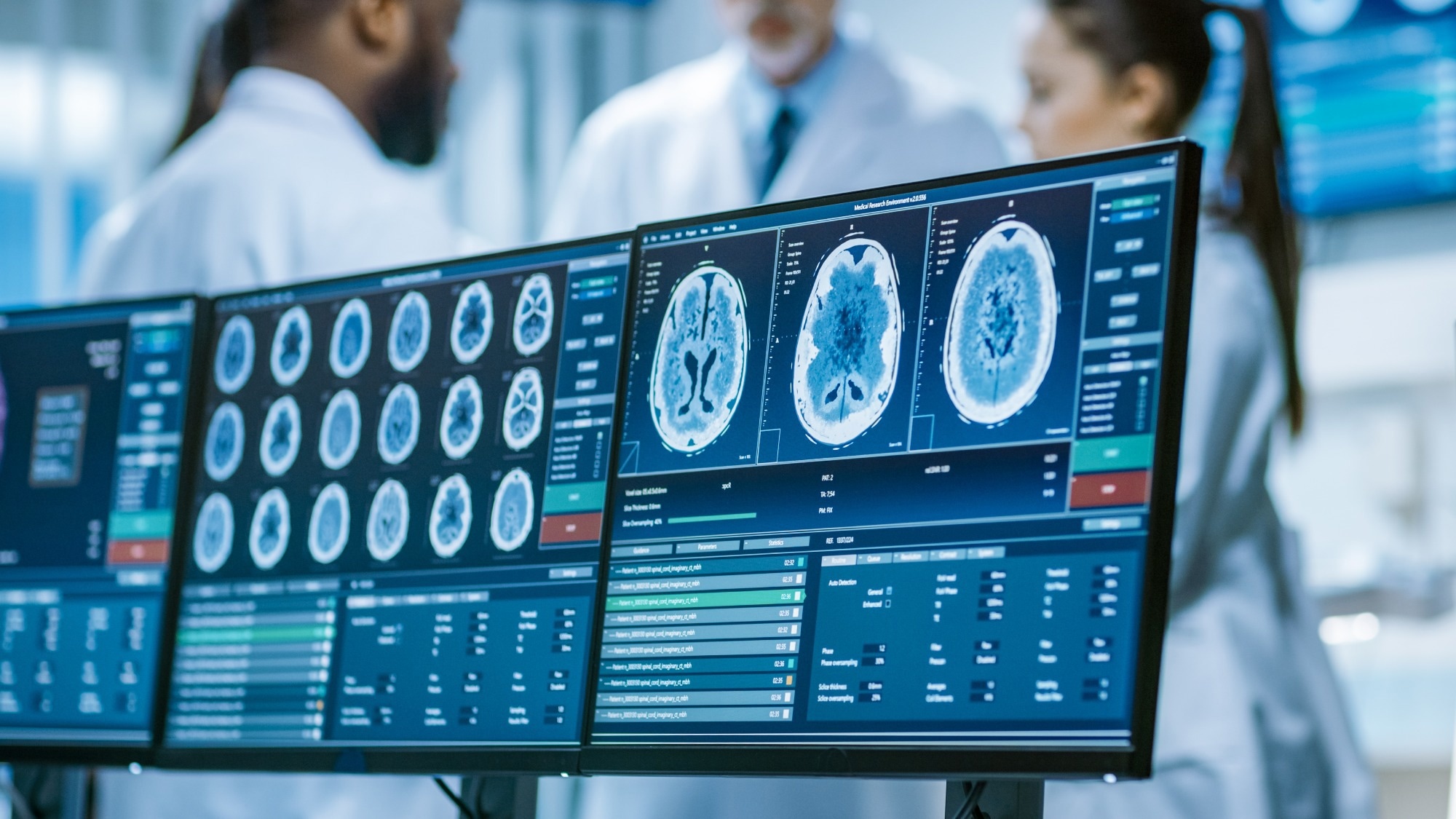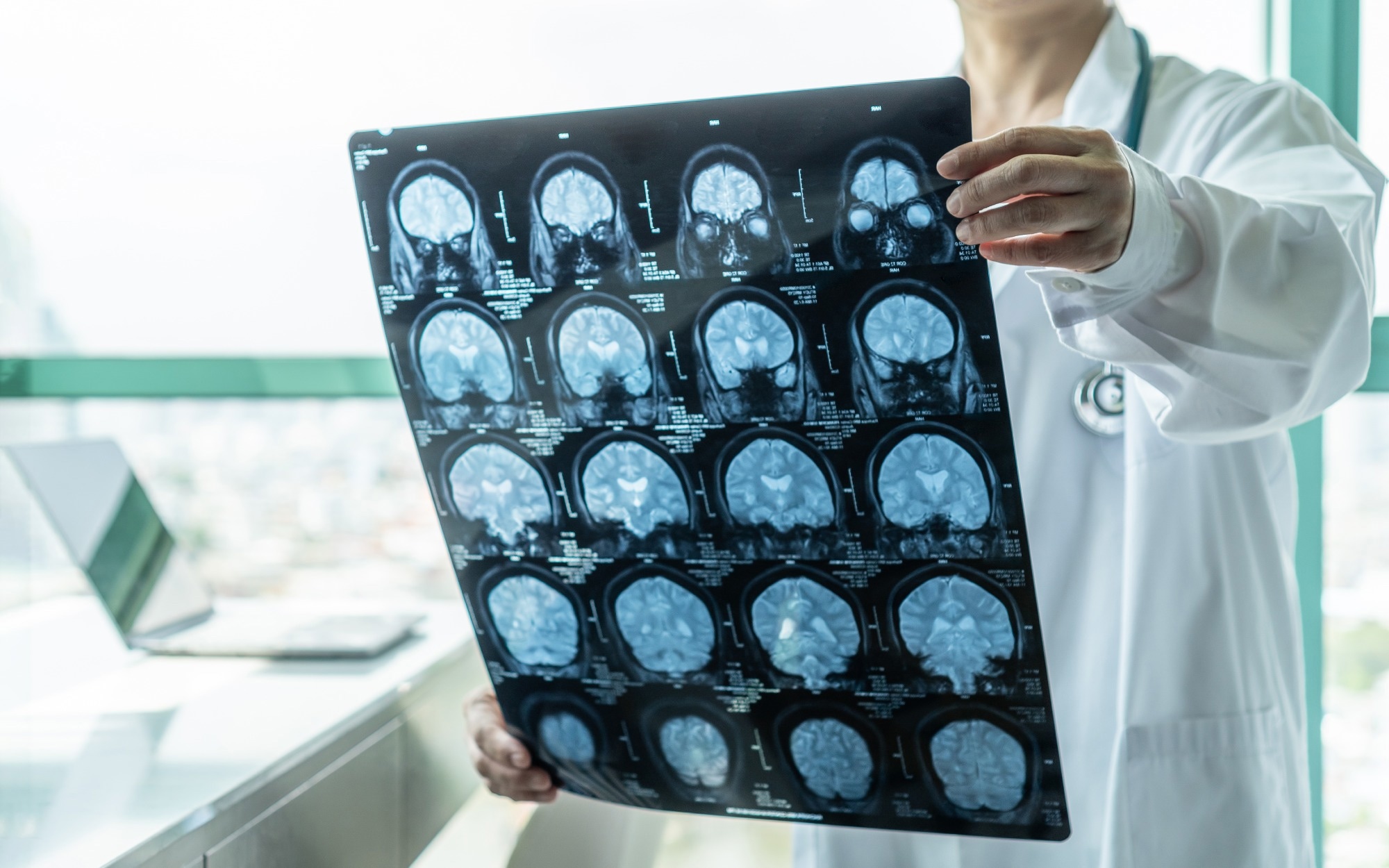Introduction
Causes and symptoms of Rasmussen's disease
Epidemiology of RE
RE diagnosis and treatment
References
Further reading
Rasmussen’s disease, also known as Rasmussen's encephalitis (RE), is a rare, chronic, inflammatory neurological condition. It is highly prevalent in children and is associated with epilepsia partialis continua (EPC), invariably hemiparesis, and cognitive impairment.
RE usually affects only one hemisphere of the brain resulting in unilateral inflammation of the cerebral cortex. It is a disease of unknown etiology with no consensus on treatment.
 Image Credit: SewCream/Shutterstock
Image Credit: SewCream/Shutterstock
Causes and symptoms of Rasmussen's disease
Rasmussen encephalitis has no known specific cause. However, researchers speculate that RE might occur due to an underlying immune-mediated pathway featured by consistent T-cell involvement.
The condition is characterized by gradual neurological impairment, unilateral hemisphere atrophy, drug-resistant seizures, frequently manifested as EPC, and cognitive decline. Three stages—a prodromal stage, an acute stage, and a residual stage—define the disease's natural history. The "prodromal stage," which is the initial stage, is characterized by nonspecific, occasional seizures and mild hemiparesis. After a few months, all patients go through an "acute stage" with frequent focal motor seizures or, more frequently (37 to 96 %), EPCs. These seizures typically originate from one cerebral hemisphere. EPC, a form of uncontrollable focal somatomotor status epilepticus with a cerebral origin, is defined by persistent focal jerking of a body part, typically confined to a distal limb or face. Its duration varies from 4 hours to 18 years and cannot be accurately approximated.
Patients who delay receiving the right care experience progressive hemiplegia, hemianopia, cognitive deterioration, and behavioral abnormalities, including irritability or hyperactivity during the acute period. Additionally, if the language-dominant hemisphere is damaged, dysphasia is observed. If the dominant hemisphere is impaired, aphasia may be present. The final stage of a disease's progression is called the "residual stage." Less frequent epileptic convulsions and severe persistent neurological impairments, and motor and cognitive problems are its defining characteristics. In certain patients, the prodromal stage may last up to several years and may begin with mild hemiparesis or infrequent seizures.
The prevalence of continuous epilepsia partialis in Rasmussen's encephalitis patients is about 50%. Movement impairment is first restricted to the post-seizure stage but develops into a significant and persistent condition as the disease progresses. The condition typically affects children; however, 10% of RE cases begin in patients who are adolescents or adults. Compared to early RE, these late variants exhibit a slower clinical course, a longer prodromal stage, and less severe residual neurological impairments. Rarely other conditions like low-grade tumors and tuberous sclerosis can be linked to RE.
Rasmussen encephalitis rarely occurs in a bilateral form. Only after a protracted period of illness progression, brain shrinkage and the contralateral spread of epileptic abnormalities are seen. Only two of the roughly 200–300 instances of Rasmussen's encephalitis that have been described have histopathological evidence of bilateral disease.
 Image Credit: Gorodenkoff/Shutterstock
Image Credit: Gorodenkoff/Shutterstock
Epidemiology of RE
The annual incidence of RE is estimated to be 2.4/1,000,000 (for children under 18 years) with no sex or ethnic preferences.

 Read Next: What is McArdle's Disease?
Read Next: What is McArdle's Disease?
RE Diagnosis and treatment
The clinical, electrophysiological, and morphologic characteristics are used to diagnose RE. A European Consensus declaration proposed in 2005 formally recommended the diagnostic standards. With the help of early diagnosis, targeted treatments including immunosuppressive therapy, and reduced reliance on brain biopsies for diagnosis, these criteria hope to slow the progression of atrophy.
For a more precise diagnosis, electrophysiological testing and neuroimaging may be beneficial. Rasmussen's encephalitis diagnostic evaluation and follow-up now frequently involve brain MRIs. Even though it may be normal at the start of the disease, a brain MRI is important to confirm the suspicion of RE. In general, cortical swelling, cortical and subcortical increased signal intensity on T2-weighted imaging, and progressive unilateral cortical atrophy, typically involving the frontal or frontotemporal lobe or the insula, are the most prevalent findings in individuals with RE.
18FDG-Positron Emission Tomography (PET) and single-photon emission computed tomography (SPECT) may reveal a unilateral pattern of diminished cerebral perfusion and metabolism, which are frequently larger than the atrophic areas, in patients with early disease stage and unremarkable MRI findings. This may allow avoiding an invasive diagnosis.
 Image Credit: Chinnapong/Shutterstock
Image Credit: Chinnapong/Shutterstock
The goal of treatment for Rasmussen's encephalitis is to minimize seizure intensity and frequency while enhancing long-term functional results as assessed by both motor and cognitive performance. Immunosuppressive or immunomodulatory therapies are being considered since Rasmussen's encephalitis is thought to be an immune-regulated process. Case reports or limited, uncontrolled patient series have reported the side effects of long-term immunotherapy for Rasmussen's encephalitis. These studies' results demonstrate the most successful use of long-term corticosteroids, protein A immunoabsorption or plasmapheresis, intravenous immunoglobulins, and the T-cell inactivating medications tacrolimus and azathioprine.
Anticonvulsive therapy only partially prevents seizures, and antiepileptic medications are especially ineffective against EPCs. Because no single anti-epileptic therapy or combination of drugs is superior to others in treating this condition, none have been licensed. The severity of epilepsy, neurological damage, age at onset, dominant hemispheric dominance, and operation timing are highly contested topics. Some studies advise early surgery to stop the involvement of the other normal hemisphere, contending that epileptic activity adds to the increasing neurological deterioration in people with RE. Young people with RE should get a hemispherectomy as soon as possible because early surgery appears to be associated with improved physical and cognitive results.
A rare progressive disease, RE can cause devastating neurological conditions and EPC. There is no unique therapy approach focused on pathogenic variables because the etiology of this condition is unknown. The treatment of RE may be successful due to extensive pathogenesis research spanning experimental and clinical trials.
References:
- Hammed, A., Badour, M., Baqla, S., & Amer, F. (2021). Diagnosis and treatment of Rasmussen's encephalitis pose a big challenge: Two case reports and literature review. Annals of medicine and surgery (2012), 68, 102606. https://doi.org/10.1016/j.amsu.2021.102606
- Lagarde, S., Boucraut, J., & Bartolomei, F. (2022). Medical treatment of Rasmussen's Encephalitis: A systematic review. Revue neurologique, S0035-3787(22)00035-2. Advance online publication. https://doi.org/10.1016/j.neurol.2022.01.007
- Tang, C., Luan, G., & Li, T. (2020). Rasmussen's encephalitis: mechanisms update and potential therapy target. Therapeutic advances in chronic disease, 11, 2040622320971413. https://doi.org/10.1177/2040622320971413
- Orsini, A., Foiadelli, T., Carli, N., Costagliola, G., Masini, B., Bonuccelli, A., Savasta, S., Peroni, D., Consolini, R., & Striano, P. (2020). Rasmussen's encephalitis: From immune pathogenesis towards targeted-therapy. Seizure, 81, 76–83. https://doi.org/10.1016/j.seizure.2020.07.023
- Varadkar, S., Bien, C. G., Kruse, C. A., Jensen, F. E., Bauer, J., Pardo, C. A., Vincent, A., Mathern, G. W., & Cross, J. H. (2014). Rasmussen's encephalitis: clinical features, pathobiology, and treatment advances. The Lancet. Neurology, 13(2), 195–205. https://doi.org/10.1016/S1474-4422(13)70260-6
Further Reading